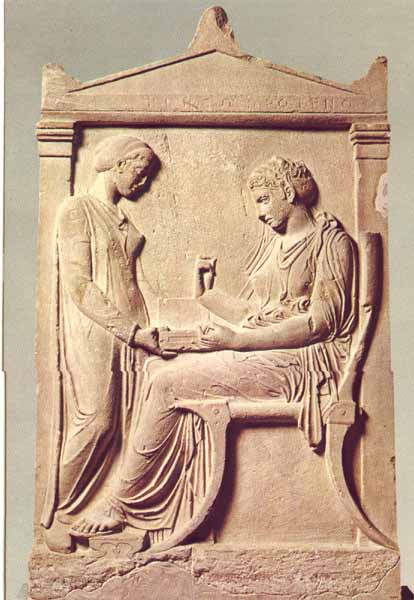by Amanda Bauer
Grave stelai were first made in Athens from the end of the fifth century. Stelai depict the deceased in poses ranging from a glimpse from everyday life in the fifth century to stylistic contemplative poses at the end of the fourth, but all stelai are personal representations of departed loved ones.
One of the first grave stelai is the “Stele of Hegeso,” in which a seated young woman is taking a proffered jewelry box from her maid. The stele was erected at in the late 5th or early 4th century BCE in memory of Hegeso, the daughter of Proxenos (both names are inscribed on the stele). The two women’s garments reveal their anatomy underneath (a style which became prevalent in the fifth century). In the severe style, their faces are calm and serene (emotionless), though someone has died.

Grave stele of Hegeso
A stele from Rhamnous in Attica (ca. 330-320 BCE) is very different in style. The two figures, thought to be a husband and wife, are in high relief. The husband shows great grief and both figures show a depth of emotion, characteristic of the Hellenistic style.
Works Cited:
Biers, William R. The Archaeology of Greece: An Introduction. Ithaca, NY: Cornell University Press, 1980. 2nd ed.
Kleiner, Fred S. and Mamiya, Chrisitin J. Gardener's Art Through the Ages. 12th ed. Belmont, CA: Thomson Learning Inc., 2005.
